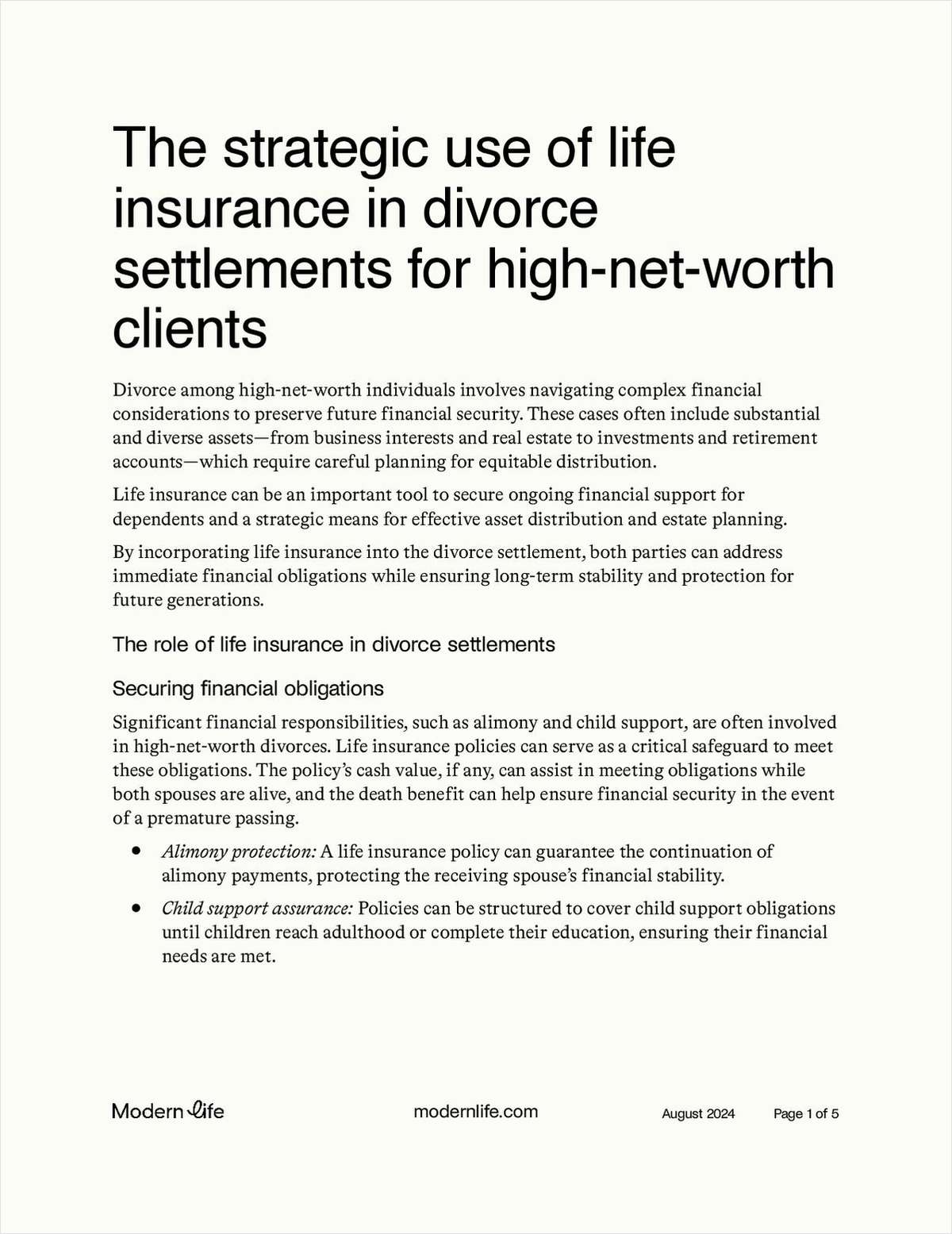Many of the problems we face today come from the gap between our vision of reality and what the world really looks like. One area where I'm constantly confronted with this illusion-versus-reality problem is the way financial advisors think about their practices. As far as I can tell, most advisors view themselves as lone rangers whose clients' well-being depends on their judgment alone.
Yet if you're a good financial advisor, the growth of your practice is almost inevitable. Most advisors find that to adequately service their existing clients and attract new ones, they need help–at a minimum, an administrative assistant, a receptionist, or clerical staff. In many cases, advisors recognize that they could also benefit from paraprofessional support, and sooner or later, the help of other advisors. And there's the rub: As soon as you add just one person, you're at least a part-time manager, diverting some of your time and attention and diluting your control.
Having consulted with the owners of hundreds of small practices and larger ensemble firms, I've come to realize how unprepared most are to handle growth. Whether they have a staff of five or 50, they invariably feel that they've lost control of the enterprise. It was never their vision to be surrounded by so many people, but somehow it happened. While they try to keep their hands wrapped tightly around this sack of cats, they are losing their grip because of all the squirming and squealing inside.
Unfortunately, in addition to feeling out of control, advisors' discomfort with their staffs also inhibits their ability to use that staff to leverage themselves and other staff members, greatly limiting their success.
The solution, of course, is for advisors to take a more realistic view of their practices and their role in those practices. No one can do it all today: there's too much to do and the benefits of having help are too great. For advisors to break through the glass ceiling of their own professional and business limitations, they need to add technology, people, and processes to become more productive and efficient–in a word, more successful.
In my experience, the most problematic of these steps toward progress is adding people. In many cases, advisors need to add talent that complements their abilities. Yet while adding the right people is essential to a practice's growth, it also requires an advisor to have a set of skills for which they usually aren't trained: management, leadership, counseling, and dispute resolution. But the most difficult people issue that advisors face, and ironically the most important factor in the success of a firm, is compensation.
Compensation may be such a tough issue because it appears to be, and at least in the short term is, a direct conflict of interest: The more you pay your staff, the less you take home yourself. Most advisors' internal discussion of the matter seems to begin with how hard they worked to built their business, the risks they took, and the difficulties they overcame. Now that the practice is a success, the notion of sharing some of the rewards is difficult to embrace. Starting with this kind of thinking, it's all too easy to slip into a mindset where the staff comprises lazy, greedy, self-centered kids,who want it all now, and think they can have it without paying their dues, etcetera. Conversely, it's a rare advisor indeed who intuitively understands that if structured right, he can receive a lot more in the long run from a narrower slice of a much bigger pie–that he can increase his revenues and profits because he has others to help him develop business or respond to the needs of existing clients.
To help more advisors get their minds around the concept of sharing their prosperity, last year Schwab Institutional asked us to collaborate on one of its MKT Reports on how the best-managed practices were building their compensation plans. We harvested data from our annual study for the Financial Planning Association and compared the upper quartile firms (in terms of operating performance) to the total database. Here are the lessons learned from the best-managed firms about how they pay people:
1. Formalized compensation processes are more effective than ad hoc arrangements. Many practice owners fear that by introducing more consistency and structure into their firm's compensation plan, everybody will eventually be paid the same regardless of effort or success, and that they'll lose control without the ability to pay discretionary bonuses. The reality is quite the opposite. A consistent compensation platform means that you have a clearly defined framework for rewarding staff for doing the right things, and for how they can enhance their income by helping to propel the business forward. You can still build in as much discretion as you deem appropriate, but the important point is that everybody understands the basis on which their compensation will be decided. The performance of your staff will improve exponentially once they understand exactly what they are getting paid for and for what they will be paid extra.



